
Before my brother and I were old enough to stay home alone, we used to spend every summer at my Nana’s (Grandmother’s) house. Early in the morning, either my mom or dad would bundle my half-asleep sibling and I into the car, and drop us off at her house. Usually, we would precede to immediately resume sleeping. If, for any reason, we weren’t tired, we would eat a bowl of our favorite cereals that Nana so handily kept stocked in her pantry. We spent the rest of the day in front a television set, except for when we were coaxed to the kitchen to eat.
During those summer days at her house, my brother and I certainly never went hungry. In fact, food was probably the only thing we had conversations about. Nana speaks broken English, and at the time, our Chaldean speaking abilities were severely limited. Since we couldn’t have active conversations about the weather, or school, or our silly children’s TV shows, Nana’s way of reaching out to us was by constantly offering food. My brother and I were picky eaters, but Nana was prepared, always having a few food options for her finicky grandchildren.
Although it has been a long time since my brother and I spent a summer at Nana’s house, she still keeps us well supplied with food. She’ll make pots of dolma, or stuffed grape leaves, burek, which are long rolls stuffed with meat and spices, and kubba, balls or large rounds (pizza shape) of meat, bulgur, and minced onion. While I was in Ann Arbor this past year, Nana often sent me mini eggplants that were stuffed with meat, deep fried, and cooked in a tomato sauce. And these are just a few of the foods she cooks for us.
This morning, Nana taught me how to make tekhratha d’gupta,or small pieces of bread filled with a cheese mixture. I absolutely love eating these small cheese pies. They’re perfect for lunch, a midday snack, breakfast, or just a lazy day. Whenever anyone has a baking day, they generally make tons of these pies, with meat, cheese, spinach, chicken….etc. We put them in clear bags, and stock the freezer for those days when you need a quick bite, or something that’s great finger food. Or you make them when one of your grandchildren lets you know their her favorite =) Nana knew that I was getting ready to start classes again this fall. She also knew that I wanted to learn the art of making tekhratha, so we spent the morning making a small batch of cheese pies for me to take. They didn’t all come out perfectly, but they taste good. And it’s quality time that counts.
CHALDEAN LESSON: multiple cheese pies are called tekhratha d’gupta. A single cheese pie is called tekhourta d’gupta.
DISCLAIMER: Nana made the dough and cheese mixture the night before, so I’m not actually sure how she made the dough, or how much mozzarella and homemade cheese were mixed together. For the dough, follow the instructions on the yeast packet. Add the oil before you let the dough sit for a few hours. For cheese, blend together about about 6 pounds of cheese. (I brought feta because I love the salty addition that it adds.)
Ingredients
2-3 eggs beaten, to brush the dough
Dough
5 pounds flour
1-1 1/2 cups oil (or a little more)
2 spoons of yeast (about one packet)
Cheese
3 lbs of feta
Mozzarella cheese
Homemade cheese
1 bunch parsley or 1/2 cup dry
Directions
Make the dough a few hours in advance, or the day before.
Mix the cheeses together, with dried or fresh parsley. For the cheeses, you can mix together any combo of cheeses that enjoy. A queso blacno type cheese works quite well, and adds nice flavor. It’s always a good idea to mix a few different cheeses together, at least one cheese that melts well, and at least one cheese that has a strong(er) flavor.
Take the dough, and divide into small balls, roughly one inch.

Take a ball of dough in your hands, and slowly flatten it, pushing down the middle with your thumbs. While flattening the dough ball, you want to form a small well in the middle, to better hold the cheese filling.

Fill the flattened dough with about two spoonfuls of cheese. Don’t be afraid to fill the dough with cheese! It can hold a lot more than you think, and let’s be honest. More cheese is better than less.

Once you’ve filled the flattened dough ball with as much cheese as it can hold, bring the edges of the dough together, slowly enveloping the cheese with dough.

Place the folded cheese ball on the counter, face down. Repeat until you’ve filled all of the dough balls with cheese. Once you’re done stuffing the balls of dough, begin flattening them. Hold the ball in your hand and tighten your hand around it, letting out the air bubbles. You can flatten the ball in the palm of your hand, or you can flatten the ball with your fingers while it’s still on the counter.
Begin placing the flattened balls of dough on a baking tray. Brush the flattened dough, or the tops of the tekhratha with beaten eggs. Bake for about 15-20 minutes, or until the tops are golden brown. Extra tekhratha can be placed in clear bags or containers, and stored in the freezer. Be sure to try one of these right out of the oven. Ok, maybe five minutes after. They are warm, fragrant, and full of delicious melted cheese. Ma baseema! (So good!)

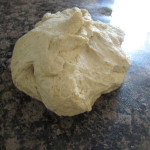
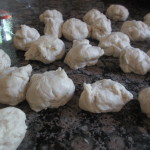
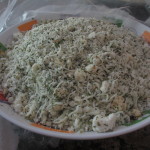
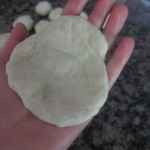
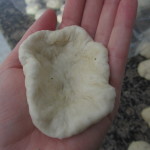
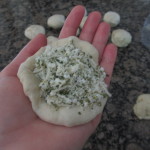
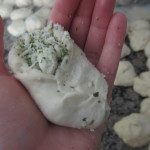
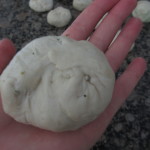
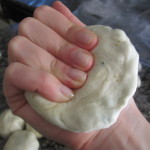
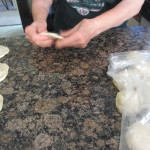
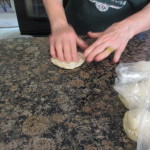
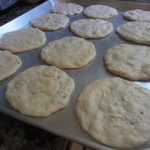
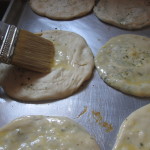
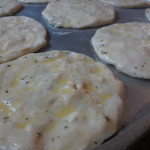
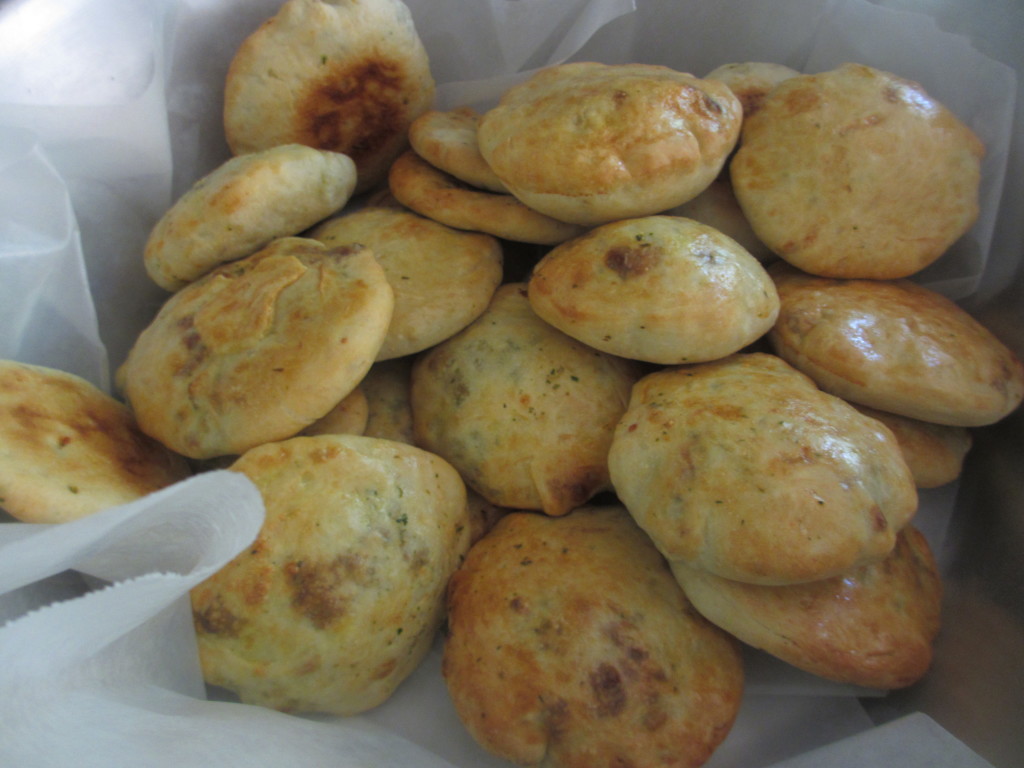
I love this page very beneficial for our young generation Helping them preparing
our traditional food
Thank you May! One of the reasons I started this blog was to document all of the recipes that my mom, aunts, and grandma make 🙂
Hi Candice, I’m going to make this one next weekend or the one thereafter.
What a sweet way to owner your Nana, this brought tears to my eyes. I try to keep the food coming for my precious grandkids. They are the love of my life 🙏
Thank you Norah! I’m sure that your grandkids love the food that you make for them 🙂
how many cheese pies does this make?